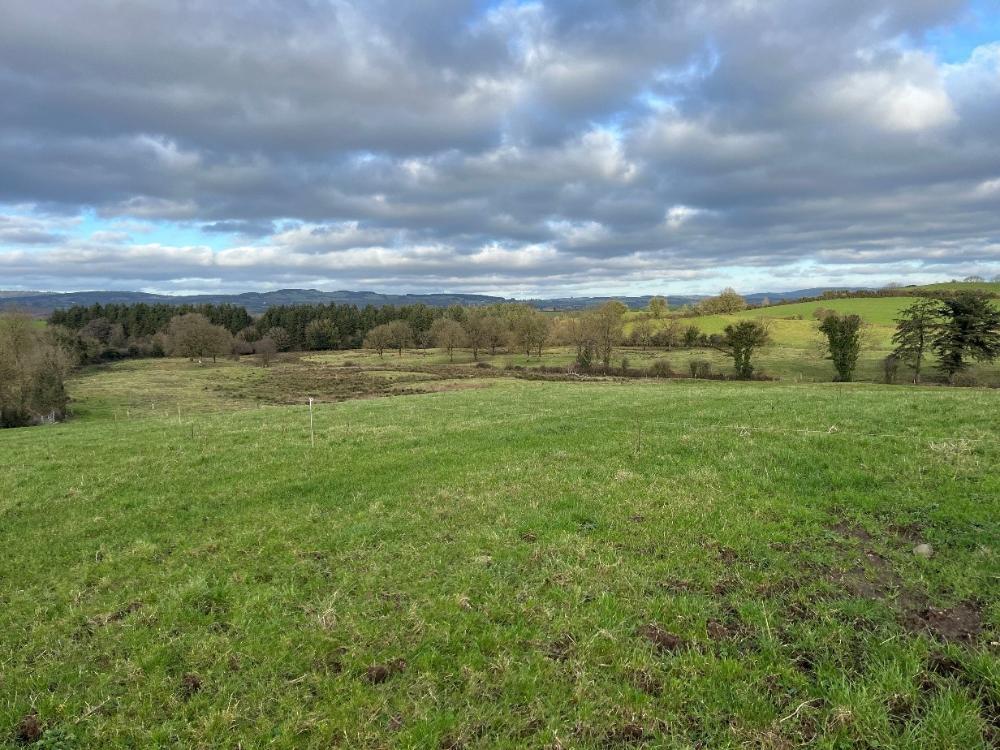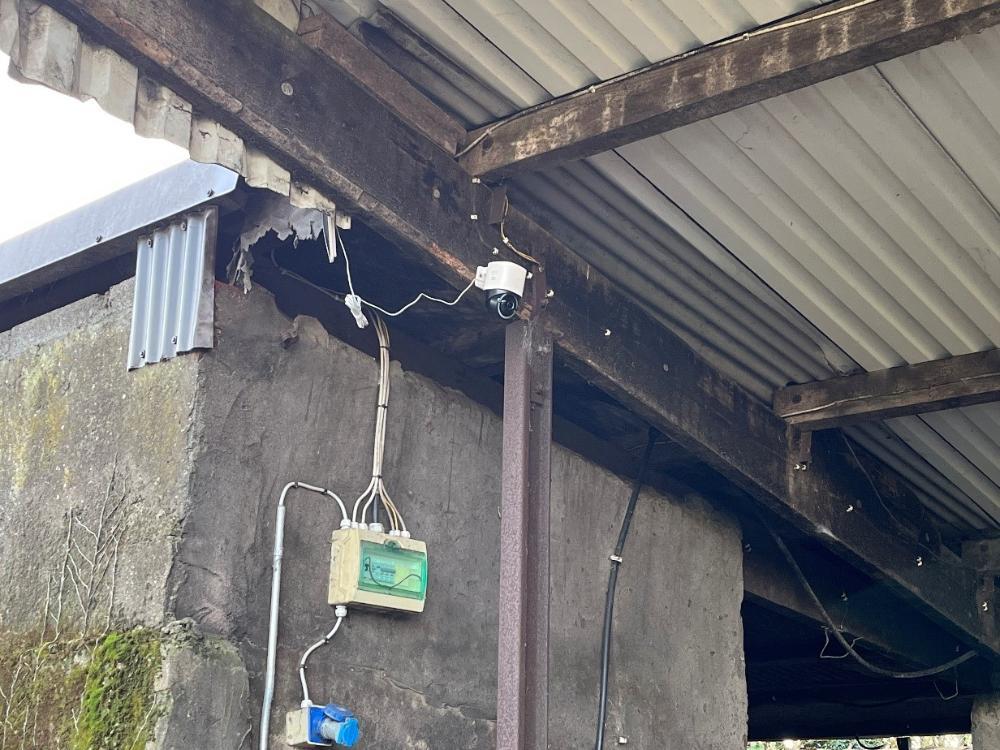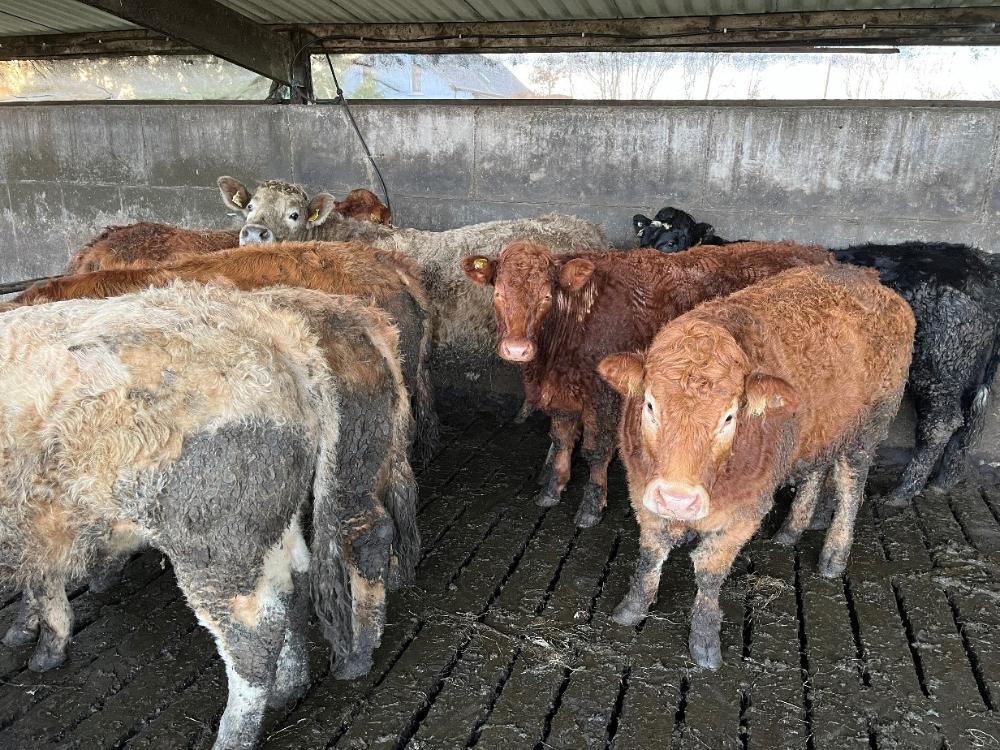Managing grass on the out farm
- Grazing plans for Tulla
- Ideal paddock size?
- Reducing labour using a solar powered camera on the outfarm
The FRX bullocks are grazing on the out farm in Tulla. Some later calving cows are also at grass there too and will return home to Ardrahan when they come closer to their due dates.
There is 26ha on the outfarm in Tulla in total. It is separated into 5 different blocks of land. There are two slatted sheds and some dry bedded sheds available to Aonghusa for accommodation, but only one slatted shed is being used this winter.

Figure 1: Aonghusa has been gradually adding more paddocks and improving fencing on the farm in Tulla
His plan for 2025 is to graze 41 store cattle there – this includes his own 2024 born yearlings and the 11 bought in Friesian bullocks. He plans to buy a further 15 dairy beef cattle to join them this spring. Aonghusa’s plan is that they will graze in the farm as one group and he will aim to finish them in a 30 month system off of grass.
Aonghusa can calculate the ideal paddock size for these cattle as follows:
As the outfarm is 20 minutes from his home in Tulla, it would take Aonghusa a considerable amount of time to travel up and down daily to check and move stock. In an effort to reduce labour, he has invested in a solar camera that works off of a sim card, i.e. no wifi required. His plan is to move this around to each paddock with the cattle and can help him to check on the cattle from his phone and see if they need to be moved on. It is currently being used in the store cattle shed to monitor cattle and to check if they need more silage.

Figure 2: Solar powered camera is being used to monitor cattle and feed on the out farm
The cattle were weighed on 20th December.
The 2024 born heifers (9) averaged 335kg and gained 0.87 kg/day since their previous weighing on 16th November.
The 2024 born bullocks (15) averaged 350kg and gained 0.75 kg/day on average during the same period.
The 2023 store heifers (4) averaged 458kg and gained 0.51kg/day since 1st December 2023.
The 2023 bullocks (12) averaged 537kg and gained 0.54kg/day since 1st December 2023.
Aonghusa is looking at drafting some of the heavier ones for feeding. Some of them are laying down fat so he plans to feed them 5kg ration/head/day for approximately 60 days and finish them from the shed. The lighter ones will go back to grass for finishing.

Figure 3: Some of the 2023 born store cattle
Aonghusa has completed his profit monitor for 2024. On analysis of the cattle detailed report, he is very happy with the farm’s financial and physical performance this year.
The first figure on the report is the output per livestock unit which was 314 kg/LU. This was an increase since 2023 where the figure was 294 kg/LU, but it is behind the target >350 kg/LU for a suckler system. This figure is affected by everything that affects weight gain in the herd – the cow fertility, bull fertility, mortality, genetics, nutrition at grass, winter performance, ration fed, animal health and calving spread. For Aonghusa, this figure is mainly affected by the cows that were sold that tested positive for TB and were under finished at the point of sale.
The stocking rate on the farm is 1.38 LU/ha or 103 kg organic N/ha which means that Aonghusa is not in derogation, but is in a prime position to take advantage of his dry farms by maximising weight gain from grass. The FRX bullocks and some cows were out wintered on the out farm in Tulla so this helps to reduce wintering costs.
The gross output figure is calculated from cattle sales minus cattle purchases and add/subtract any changes to the inventory. Aonghusa had a gross output figure of €1338/ha which is the main ‘money in the pot’ to cover variable and fixed costs. This increased by 33% from €961/ha in 2023.
The 3 biggest expenses on drystock farms are purchased concentrate, fertiliser and contractor costs. Aonghusa’s farm is no different with his biggest costs for the year;
In total, the total variable costs (€453/ha) were 34% of the gross output figure, which is exceptionally low. Aonghusa’s plan for 2024 was to spend as little as possible and it resulted in him being much less than the target of >50%.
The fixed costs were €404/ha for 2024 which is similar to 2023. This resulted in a net margin of €480/ha across the farm, excluding any direct payments, which Aonghusa was very happy with. It was a 117% increase on the net margin in 2023 due to a higher output and excellent control of costs.